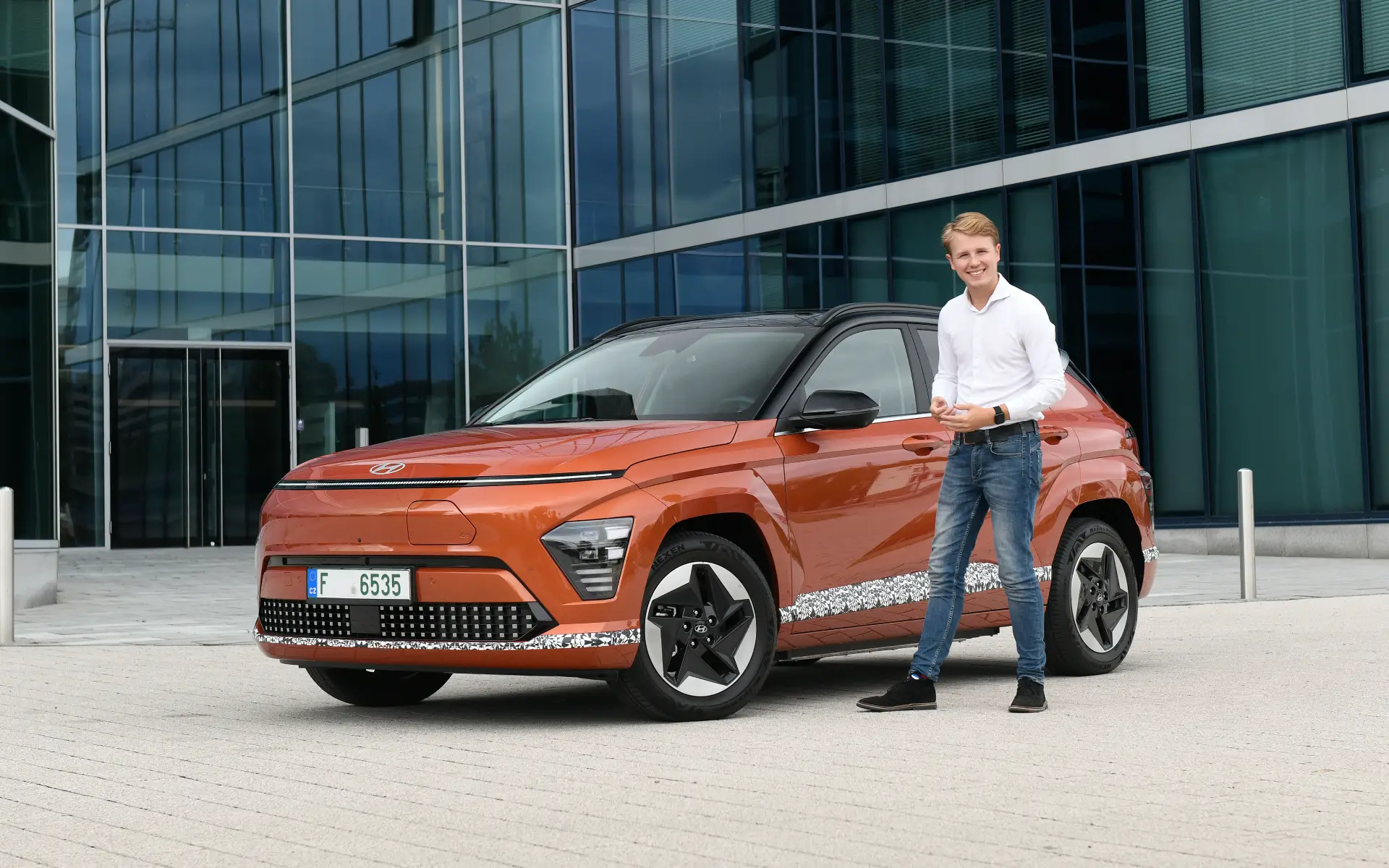Will the new Hyundai Kona Electric take the Netherlands by storm? – First impression
Electric first: this is how they will proceed in Korea from now on. Internal combustion engine powertrains play second fiddle to the new Hyundai Kona. Why? Hyundai decided to develop the new Kona with the electric variant in mind. So that means the platform is built around the electric powertrain, where the internal combustion engine was still the primary starting point in the previous Kona. So the Hyundai Kona Electric 2023 is actually as the model was intended from the beginning!
Hyundai Kona Electric (2023) – Ready to conquer the Netherlands? – FIRST PRESS – AutoRAI TV
Watch first, then read on? Check out our test drive of the Kona Electric prototype!
The most striking compact crossover?
Earlier we walked around the new Kona Electric, but that specimen had a rather nondescript composition. How different it is with this prototype in the splashy color “Jupiter Orange. The new Kona is easily one of the most striking compact crossovers. There is still some camouflage on the test car, but it is otherwise little concealment. In fact, it is more like an indication that this is really a prototype after all, no matter how “finished” the car looks.
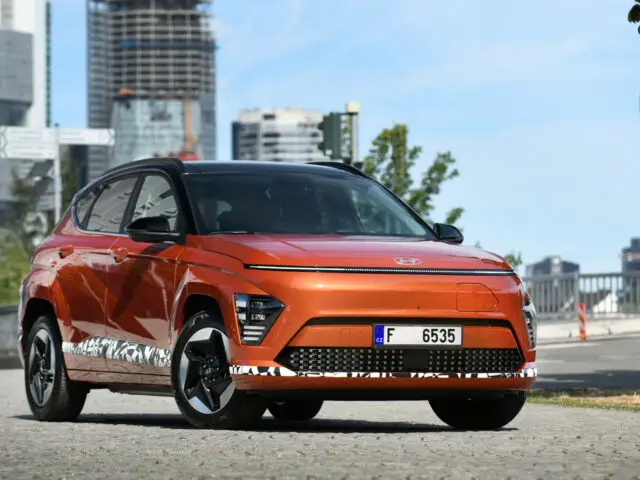


More powerful and efficient
In terms of power, the new Kona Electric improves only slightly. In fact, the Long Range has 218 horsepower, which is slightly more than the 204 horsepower of the most powerful Kona Electric before. However, this electric motor did become a lot more efficient, but we’ll get to that in a moment. As standard, the Kona Electric has 166 hp, but both versions do have a maximum torque of 255 Nm. So you will notice the difference in power mainly at higher speeds or when you are running on a shelf.
The Long Range has a battery pack with a capacity of 65.4 kWh, while the standard version makes do with 48.4 kWh. Compared to the previous Kona Electric, this is a nice gain especially for the standard version, as previously it had a battery capacity of 39 kWh. It comes as no surprise, then, that the range improves considerably for both versions. Current figures are still estimates, but the Long Range is expected to travel more than 500 km (up to 514 miles), while the standard version also reaches more than 350 km (377) on a single battery charge. That’s about 70 km more than before. This is due in part to the low cW value of 0.27 and the more efficient electric motors. For both variants, the estimated WLTP energy consumption is between 15 and 16 kWh per 100 kilometers.
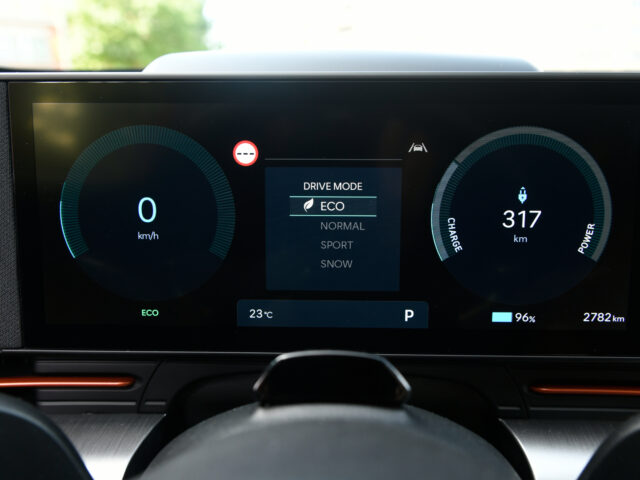


Driving the Hyundai Kona 2023
Time to get behind the wheel of the new Hyundai Kona. First, you notice how much interior space has increased. The wheelbase of the new Kona grew by 6 centimeters and the overall length by 15 centimeters. It shows, both inside and out. In particular, the rear passengers gain a good deal of leg and shoulder room. As a result, even adults can sit comfortably in the back of the Kona Electric. Luggage space also increased slightly in size, as the Hyundai Kona’s extra length – in addition to the increased wheelbase – is mainly behind the rear axle.

With its increased size, the new Hyundai Kona moves a little further toward its bigger brother, the Tucson. This puts it neatly between the Bayon and the Tucson. Furthermore, you notice that the Hyundai Kona Electric 2023 is quite influenced by the larger Ioniq 5 and Ioniq 6. This is particularly evident in the interior. Like both Ioniqs, the Kona has two large 12.3-inch widescreen displays on the dashboard and the transmission knob is on the steering column these days. That means quite a bit of storage space is freed up between the front seats. Also special: inside, Hyundai logos are nowhere to be seen.
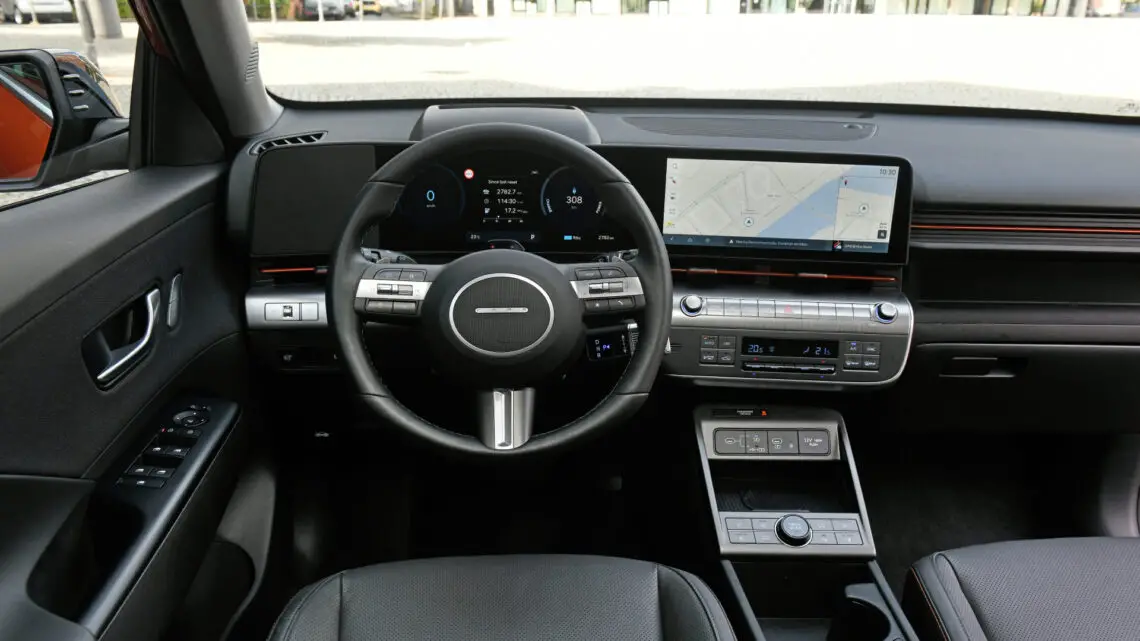
Unfortunately, we have only been able to take the new Kona Electric out on the road for a short time, but the prototype’s level of comfort is immediately striking. Thus, the seats are pleasantly soft and extensively adjustable. It almost reminds us of the lounge-like feel offered by the Ioniq 5. The new Kona’s handling evokes that association as well. Everything flows quite lightly, smoothly and easily, but without being too soft. So actually perfectly balanced, with the Kona Electric’s center of gravity remaining nicely low due to the battery pack in the bottom. Also nice is that the Kona Electric has become a lot more useful as a travel car. Not only because of the extra range and increased space, but also because of shorter charging times. In fact, fast charging is now possible with a payload of 102.3 kW, where before it was 50 to 80 kW. Specifically, that means you can top up about 120 kilometers of range in 15 minutes at the fast charger.
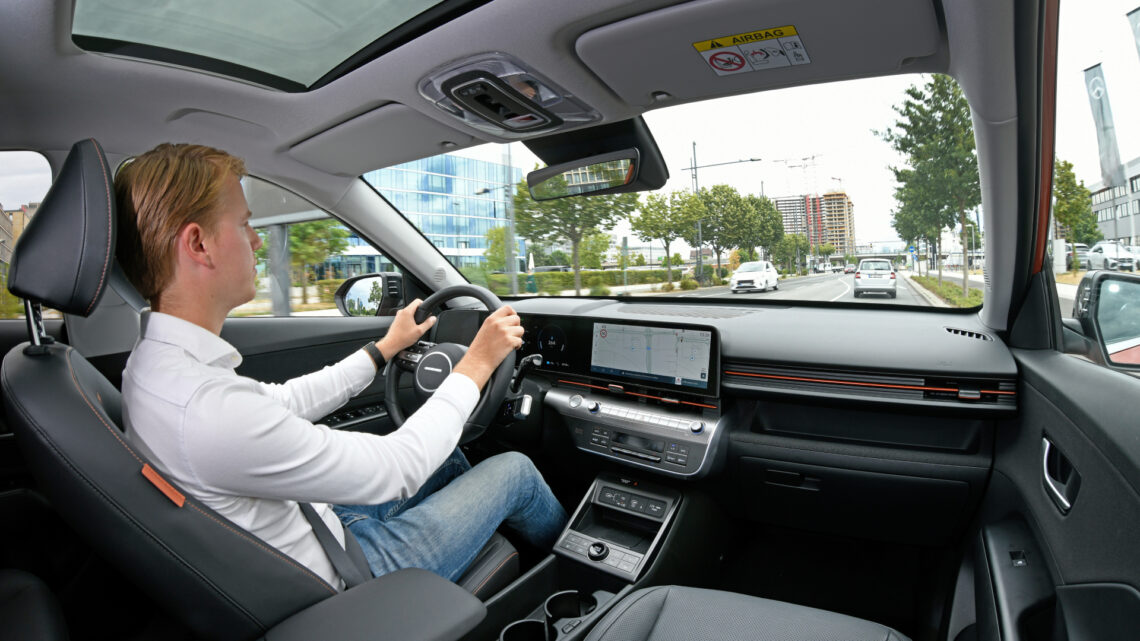
Hyundai Kona Electric 2023 price
After reading about all these wonderful improvements, you must be curious to know how much the new Kona Electric will cost. Unfortunately, we can’t tell you that yet. We do know that the mild hybrid and hybrid variants of the Kona have starting prices of 29,995 and 33,995 euros, respectively. It is therefore obvious that the price of the 2023 Hyundai Kona Electric will be close to 40 grand. We will know more this fall, when the new Kona Electric will be in the showroom.
Will the Hyundai Kona Electric take the Netherlands by storm?
The previous Hyundai Kona Electric was a fairly big success in the Netherlands. Will the new Kona Electric repeat that starting this fall? That chance is certainly there, as first impressions of the new Kona Electric are positive. The electric crossover is comfortable, spacious and feels a lot more mature than before. The extra range and better charging times are also very welcome. For now, one and all depends on the starting price. If Hyundai can market the Kona Electric sharply, we might just be dealing with a new winner here!


